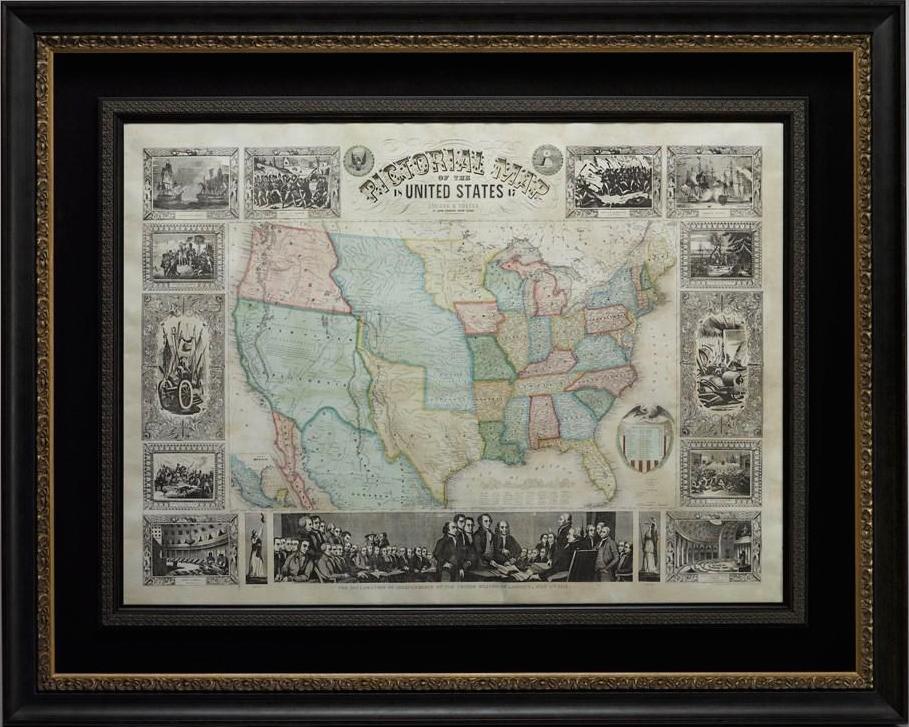Illustrations in Jane Austen's Works
Starting in the 1890s, printing technology and art converged, resulting in handsome illustrated editions of the Jane Austen novels, all lavishly decorated. Jane Austen wrote limited physical descriptions of her characters and their surroundings, which gave illustrators a unique opportunity to develop an image of the world she created. These illustrators had a heavy hand in shaping the way readers, and later film and play adaptations, interpreted Austen characters. "The serious effect of these illustrations was…in some part shaping a picturesque and sentimental image of the novels" (Carroll, Wiltshire, 2009). Among the most coveted illustrated Jane Austen volumes were those illustrated by Brock brothers, Charles and Henry. We are excited to have a new-in set of Charles Brock illustrated Jane Austen novels from the 1920s.
British illustrator Charles Edmund Brock (1870-1938) began his illustrative career working for a number of different publishers, including George Routledge & Sons and Walter Scott. But it was as an illustrator for the Cranford series published by Macmillan that he first came to public attention. Charles produced 100 black & white illustrations for an edition of Jonathan Swift’s Gulliver’s Travels (1894) and illustrated Pride and Prejudice by Jane Austin in 1895, and later a two-volume Macmillan edition of Charles Kingsley’s Westward Ho! in 1896.
At the same time, he was producing illustrations for The Sunday Magazine and Good Words, and was now in great demand. Charles’s career was followed closely by that of his younger brother, Henry Matthew Brock. The two shared a studio with a third brother, Richard Henry Brock, and Charles and Harry’s mutual fascination with furniture and costumes of the 18th and early 19th century meant that they filled the studio with artifacts and reference material. The Brocks owned a number of Regency era furnishings and decorative arts, as well as a large collection of fashion prints, from which they had many costumes made. There are numerous accounts of family and friends modeling for them in costumes while they worked on their illustrations.
The two brothers began working for publisher J. M. Dent in the late 1890s. By 1898, a new printing technique of lithography that allowed inclusion of illustrations in full color had emerged, and Dent asked both Charles and Henry to create a set of illustrations f or a set of six Jane Austen novels. The brothers agreed to share the task in equal parts: five volumes each, six illustrations per volume, one as frontispiece. The number of illustrations—sixty in total—would seem "a modest degree of illustrations" but as printing in color increased costs, there had to be fewer illustrations. This by no way represents a lesser achievement; on the contrary, it was to be the first time the novels by Jane Austen were to be illustrated in color and with the high standard of period representation. These "pen and ink drawings tinted in watercolour" gave a more exact and detailed Georgian-era representation than ever before.
or a set of six Jane Austen novels. The brothers agreed to share the task in equal parts: five volumes each, six illustrations per volume, one as frontispiece. The number of illustrations—sixty in total—would seem "a modest degree of illustrations" but as printing in color increased costs, there had to be fewer illustrations. This by no way represents a lesser achievement; on the contrary, it was to be the first time the novels by Jane Austen were to be illustrated in color and with the high standard of period representation. These "pen and ink drawings tinted in watercolour" gave a more exact and detailed Georgian-era representation than ever before.
Austen historians Laura Carroll and John Wilshire call these Brock-illustrated editions “Chocolate-box” editions, in that they were “gift-book quality, beautiful inside with delicate pen or brush drawings, and outside with gilt embossing and Arts and Crafts inspired design.” Another critic refers to the Brocks’ work as imbued with “delicate teacup and saucer primness.”
Writing in the Dictionary of National Biography, Ian Rogerson expresses the opinion that “because of their versatility and willingness to take on such a wide variety of work, it is believed that the Brocks did not command the same respect publishers accorded [other illustrators like] Arthur Rackham and Edmund Dulac, who were much less prolific.” Yet when illustrations in books suffered during the depression in the 1920s and 1930s, Charles and Henry continued to find steady work, including a series of Dickens’s works, Pickwick Papers, Christmas Tales, Nicholas Nickleby, and Martin Chuzzlewit (1930-32).

Although many more illustrators have since contributed with images of the Jane Austen novels, there has never been a more impactful or historically significant illustrator duo than the Brocks. The Brocks introduced color and historically accurate period details to Austen’s characters and their landscapes, breathing life into her still relatively unknown characters. Illustrations by the Brocks created "the popular conception or image of 'Jane Austen', a turning point in the history of Jane Austen's cultural reputation," one that was visually repeated by the boom of the 1995 cinema and television adaptations (Carroll and Wiltshire, 2006).







